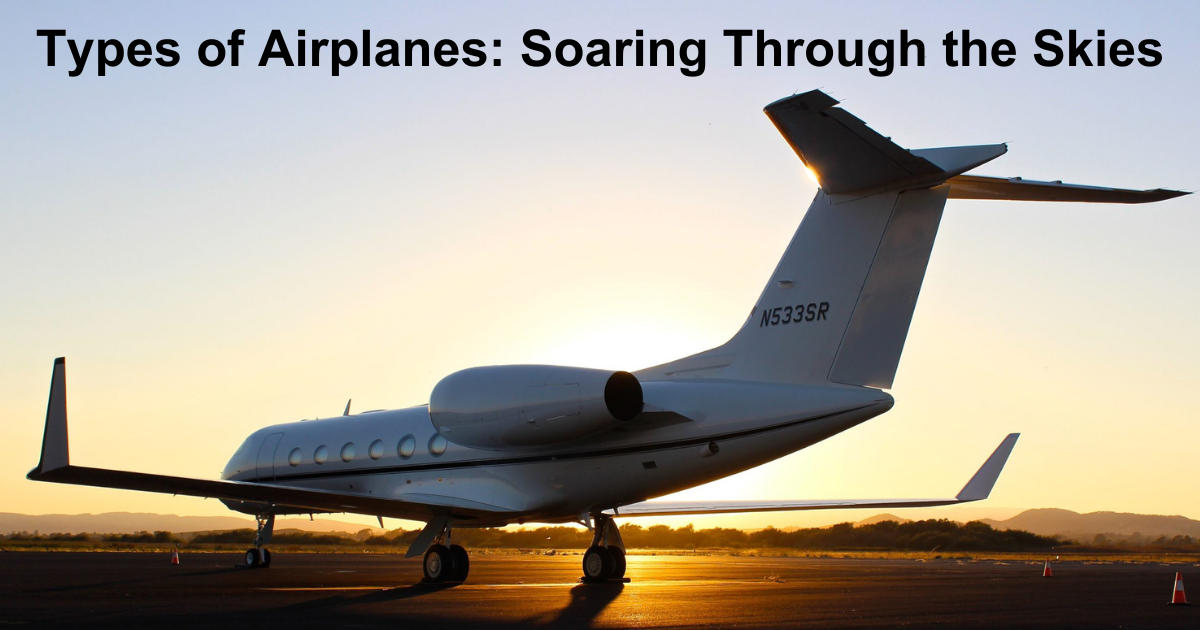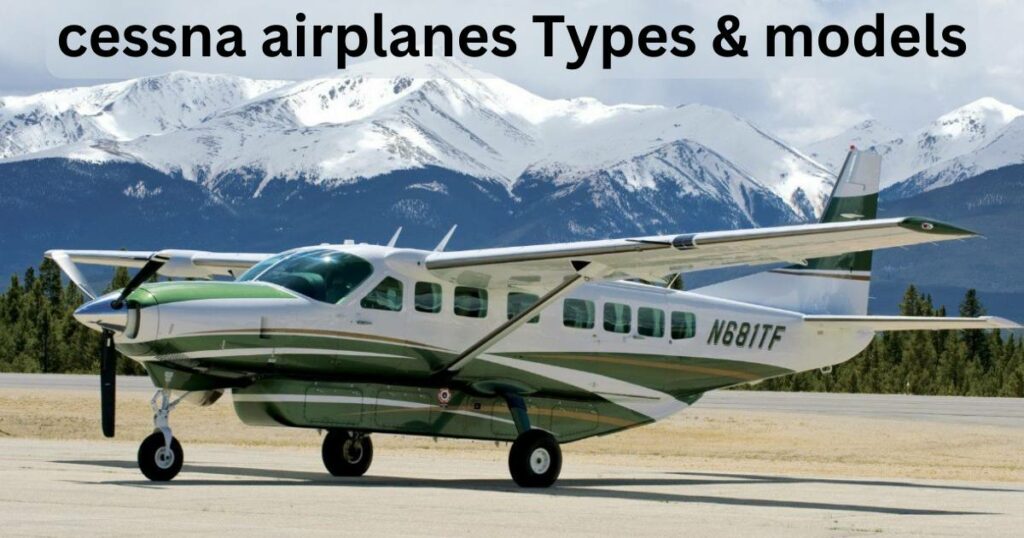
Cessna is widely recognized as a global leader in the aerospace industry. The company is most well-known for producing single-engine planes, which find widespread application in flight schools and personal aviation.
The Cessna 172, one of these, is supposedly flown more than any other plane in the world. The Cessna 150 and 152 are two-seater aircraft that were used as training tools for a sizable percentage of today’s pilots.
However, Cessna has produced many more types of aircraft than only these popular piston-engined singles over its lengthy history. Some of these are military versions, while others range from fast jets to twin-engined piston aircraft. However, since we are discussing the company’s background, let’s start there.
Cessna: A Brief History
While the company wasn’t formally established until 1927, Cessna’s roots go back to June 1911, when farmer Clyde Cessna built and piloted his own airplane. He moved to Wichita, Kansas, when many of his planes were grounded by bankers for lack of funding to complete development.
In 1927, he partnered with Victor Roos to establish the Cessna-Roos Aircraft Corporation. However, Cessna was able to successfully seek to have Roos’s name removed from the firm name once he quit a month later. Cessna temporarily stopped commercial production during the Great Depression but opened its doors again in 1946.
Their 50,000th plane rolled off the assembly line in 1963, and they manufactured their one hundred thousandth single-engine plane in 1975. The manufacturing of the Cessna Caravan began after General Dynamics Corporation acquired Cessna in 1985. Cessna was acquired by Textron in 1992. Cessna acquired Columbia Aircraft in 2007 and has since continued manufacturing several of the company’s best-selling planes.
Types And Models
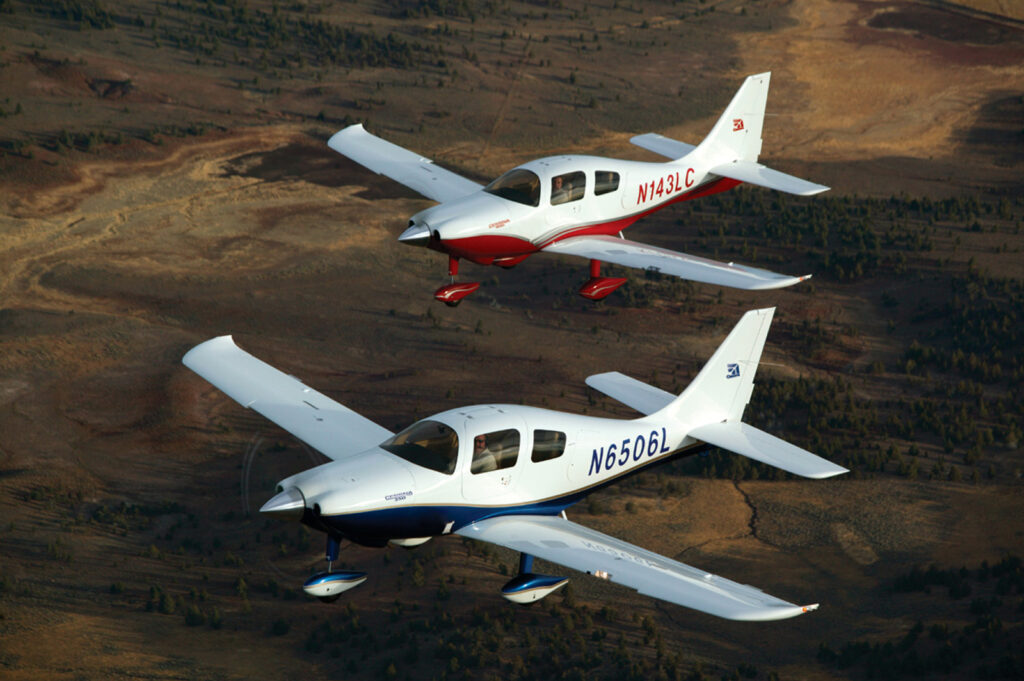
Cessna has a long history of producing a wide range of aircraft types, many of which are still in use today. These planes can be broken down into three categories: those with one engine, those with two engines, and jets. Each of these will be discussed in this article.
1- Single-Engine Planes
Here we will briefly examine a handful of these types to demonstrate the breadth of Cessna’s single-engine aircraft lineup.
Cessna 162 Skycatcher
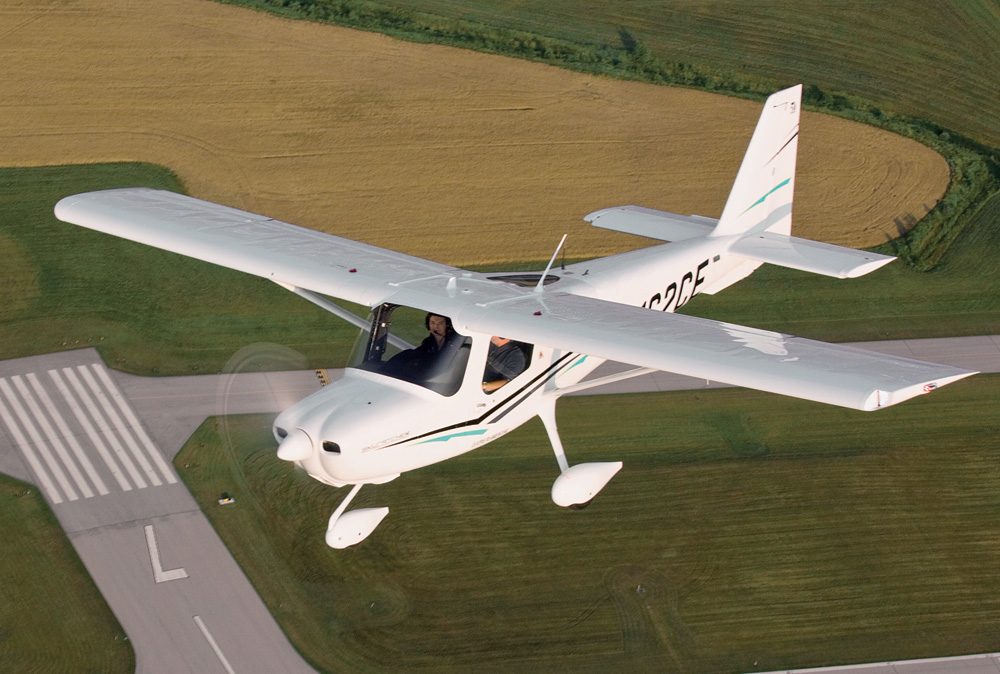
The history of the Skycatcher is a fascinating anecdote from the world of general aviation. More than a thousand orders were placed before the first delivery in 2009 when it was introduced as a cutting-edge, inexpensive airplane for training and personal use that conformed to the then-new light-sport aircraft category.
The original prototype of the Cessna 162 underwent significant design changes, most notably in the placement of its wings and the arrangement of its tail. The high-wing monoplane lands on fixed tricycles and features a nosewheel that may pivot.
The cabin width at shoulder height is 44 inches (1.12 meters), and the wingspan is 30 feet (9.14 meters). In contrast to earlier Cessna versions with just two seats, these doors swing up instead of out. The yokes for the controls are located on the panel, but only one of them is used, which is rare for a Cessna.
The airframe is made primarily of aluminum, while the cowling is made of fiberglass. In August 2006, Cessna LSA Project head Neal Willford said the company was looking into “match hole drilling” as a way to save money and streamline production.
Cessna would be the first aircraft manufacturer to implement this method into its single-engine lineup, despite its widespread use in the kit-plane sector and the production of larger aircraft. On October 9, 2007, Cessna stated that the Cessna 162 would be available with a Ballistic Recovery Systems airframe ballistic parachute system as an optional factory installation.
Cessna 170
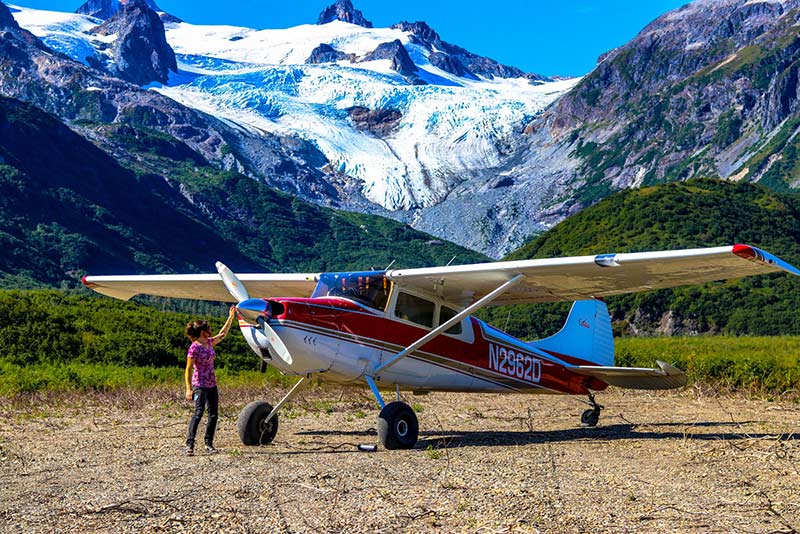
The Cessna 170 was manufactured by the Cessna Aircraft Company in the United States from 1948 to 1956. It is a single-engine, four-seat general aviation aircraft. Cessna ceased production of the 170 in 1956 and began mass-producing the 172, which would go on to become the most widely manufactured aircraft in history.
Between 1948 and 1956, 5,000 C170s were produced in three distinct models: the C170, C170A, and C170B. The normal gross weight for these aircraft is 2,200 pounds, and they each have a single-piston engine. There are still around 2,000 in operation today, and they may all be upgraded with various “mods” and STCs.
The first 170s had fabric-covered, constant-chord wings with rounded tips and V-type wing struts; it also had three of the 12.5-gallon fuel tanks first used on the 140. Two prototypes were built in late February 1948; the 170 was certified in June 1948 as a Normal category airplane with a gross weight of 2,200 pounds; a month later, Cessna received Utility category certification for the 170 with a gross weight of 1,900 pounds.
Cessna 172 Skyhawk

The Cessna 172 is the most successful plane ever made due to its widespread adoption and lengthy service life. Although not the most proficient plane in any given area, it was the most popular and successful overall. In 1956, Cessna began shipping the first of its mass-produced planes. The Skyhawk is the aircraft’s official production name.
The Cessna 172 Skyhawk is a high-wing, single-engine aircraft that can seat four passengers. Since its maiden flight in 1955, more 172s have been produced than any other aircraft in history. It was based on the Cessna 170 of 1948, but it had tricycle landing gear instead of standard landing gear.
The first model year of the Skyhawk 172, 1956, debuted in November 1955, and it stayed in production until early 1960 when the Skyhawk 172A succeeded it. Aircraft had a maximum gross weight of 2,200 pounds (998 kilograms) and were powered by a six-cylinder, air-cooled 145 horsepower (108 kilowatt) Continental O-300 engine. The Lycoming IO-360-L2A engine provides 180 horsepower and is found in newer variants.
Cessna 175 Skylark
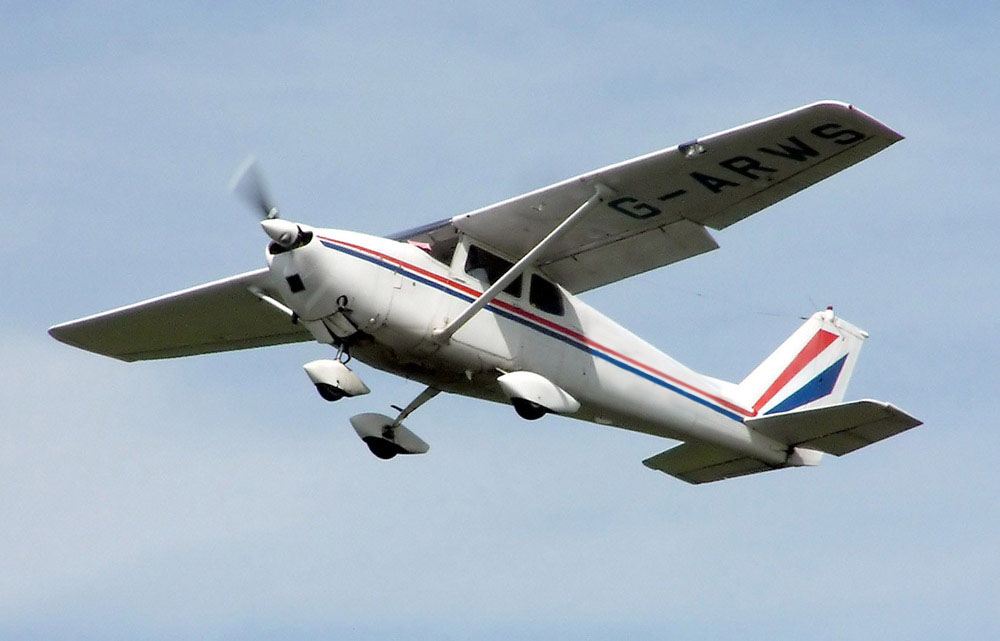
To bridge the gap between the slower 172 and the more expensive 182, Cessna developed the 175. Between 1958 and 1962, a total of 2,106 were produced. Despite claims of a 15-mph speed advantage over the 172 and improved short-field landing and takeoff capabilities, pilots were skeptical about the reliability of the higher-speed, geared Continental GO-300 engine.
The typical seating arrangement for a Cessna 175 includes the pilot and three passengers. Initially, baggage weight limits were established at 115 lb. and later increased to 120 lb. The maximum takeoff and landing weight of the 1959 model year Cessna 175 is 2350 lb, whereas that of the 1962 model year Skylark is 2450 lb.
Of the additional 100 pounds, 76 kilograms is usable weight, a relatively minor but helpful buffer for transporting a large number of people or items. The Cessna 175 can hold 52 gallons of fuel with an octane rating of 80 or above.
Unlike most commercial Cessna offerings, there are no in-house long-range fuel tank alternatives for the Cessna 175. By sticking to the economical cruising profile, pilots can extend their range to a maximum of 720 miles (630 nmi). Two 26-gallon wing tanks provide the gasoline delivered to the computer via gravity via a selector valve and strainer.
Cessna 210 Centurion
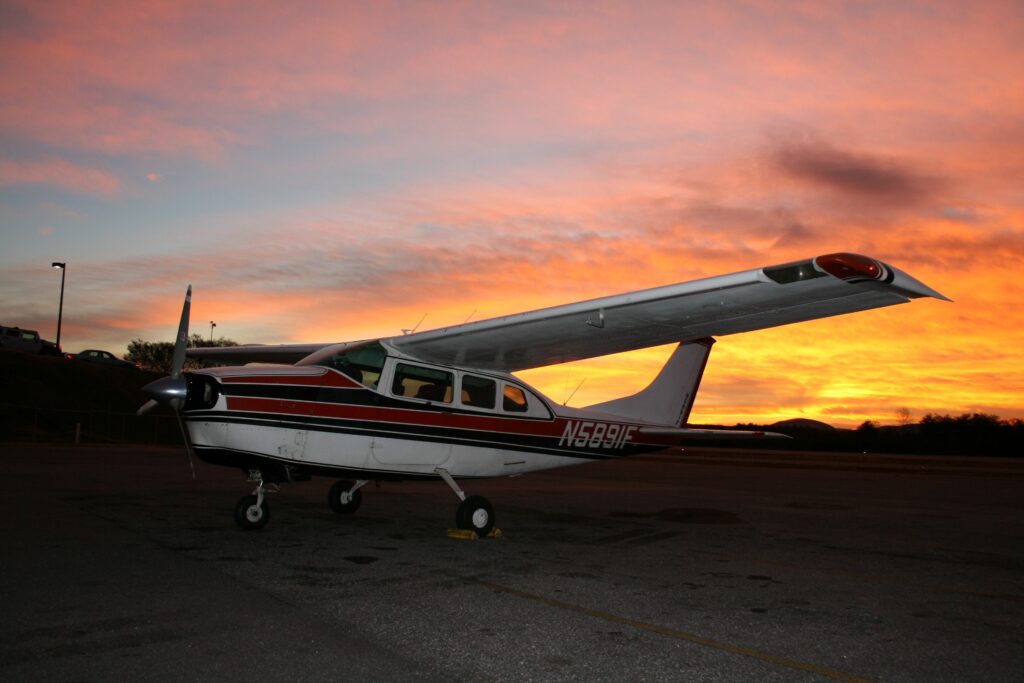
The Cessna 210 Centurion is a high-performance, single-engine, high-wing, general-aviation light aircraft with seating for six people and retractable landing gear. Cessna started making it in earnest in January 1957 and didn’t stop until 1986, when the last one flew for the first time.
The plane is propelled by a six-cylinder, air-cooled, normally aspirated, fuel-injected, horizontally-opposed engine. The engine is a 285/300 horsepower Continental IO-520-L. The aircraft has two 45-gallon vented integrated fuel compartments for storage.
Fuel travels through the fuel selector valve, the electric auxiliary fuel pump’s bypass, the fuel strainer, and finally, the engine-driven fuel pump. From this, a control unit and manifold deliver fuel to the engine cylinders. Excess vapor and gasoline from the fuel pump and fuel control unit, which are powered by the engine, are routed back to the reservoir tank via a selector valve in the wing fuel bay system.
2- Two Engines Planes
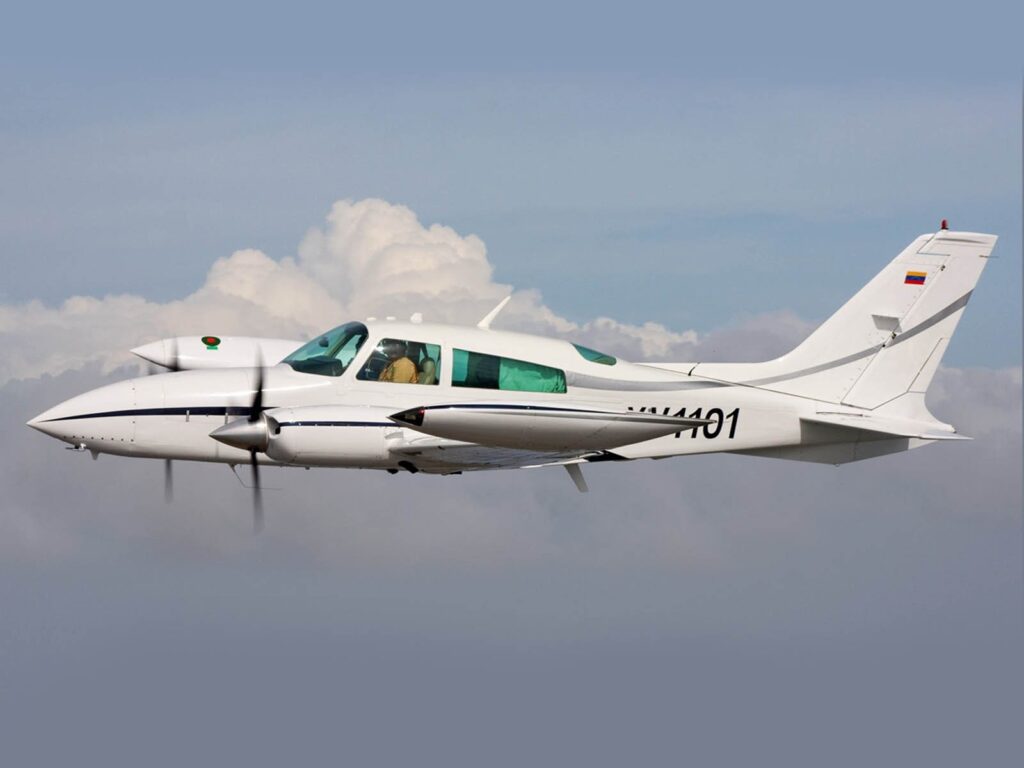
While several Cessna aircraft with twin-piston two engines are still in service, it is important to highlight that the company no longer produces such aircraft. Due to the prohibitive cost of Avgas, they determined that it was not worthwhile to pursue such a course of action. Therefore, newer, more advanced jets have gradually replaced them.
Here are a few of the most impressive Cessna twin-engine aircraft.
Cessna 320

The Cessna 320 is a popular choice due to its reputation for dependability and adaptability among twin-engine aircraft. Cessna Aircraft Company’s six- or seven-seater aircraft, which has been in service since the 1960s, is known for its comfortable cabin and reliable performance in the private and commercial aviation markets.
With its low wing and retractable landing gear, the Cessna 320 is a streamlined aircraft. Pilots that value dependability while in the air often choose this model due to its twin-engine configuration, which offers additional safety and redundancy.
Cessna has released multiple iterations of the 320 throughout the years, each updating the aircraft with the latest technology and electronics to meet the needs of the aviation business and the preferences of individual pilots.
The 320’s strong feature is its performance. They can transport six persons quickly and have a respectable fuel capacity. At 15,000 feet, you can cruise at 215 knots while using only 30–31 gph. When compared to comparable twins, such as the Beechcraft Baron, the interior of this plane is extremely spacious. The 320’s longer fuselage gives it superior handling compared to the vintage 310s of the same era.
Cessna 404 Titan

The Cessna Model 404 Titan is a twin-engined, light aircraft produced by Cessna Aircraft in the United States. At the time of its creation in the 1970s, it was the largest twin piston-engined aircraft produced by the company. The US military calls it the C-28, whereas the Swedish Air Force calls it the Tp 87.
The Cessna 404 improved upon the Cessna 402 by increasing the size of the vertical tail and making other modifications. On February 26, 1975, the prototype made its debut flight. Two turbocharged Continental Motors GTSIO-520 piston engines provide 375 hp/280 kW of output.
Both the Titan Ambassador, a passenger plane that can seat 10 people, and the Titan Courier, a utility plane that can carry either people or freight, were initially available to buyers. In early 1982, seven distinct models were on offer, including the all-cargo Titan Freighter.
Cessna 421

The 421 is a metal low-wing cabin monoplane that uses two geared Continental GTSIO-520-D engines installed in tractor mode. It also features retractable tricycle landing gear.
The Cessna 421 Golden Eagle is a pressurized variant of the older Cessna 411 and is a twin-engined, six- or seven-seat light transport aircraft built in the United States in the 1960s. The first production model year 1968, Cessna 421s, was made in May of that year.
The plane was once more enhanced in 1971. The wingspan was extended by two feet, increasing the wings’ empty and gross weight, and 5,000 feet was added to the service ceiling. To make room for a larger nose baggage area, the nose was extended two feet. The name of this new aircraft is Cessna 421B. The aircraft was introduced in 1975 with a set of gear that allowed for flight in known icing conditions.
3- Jets Planes
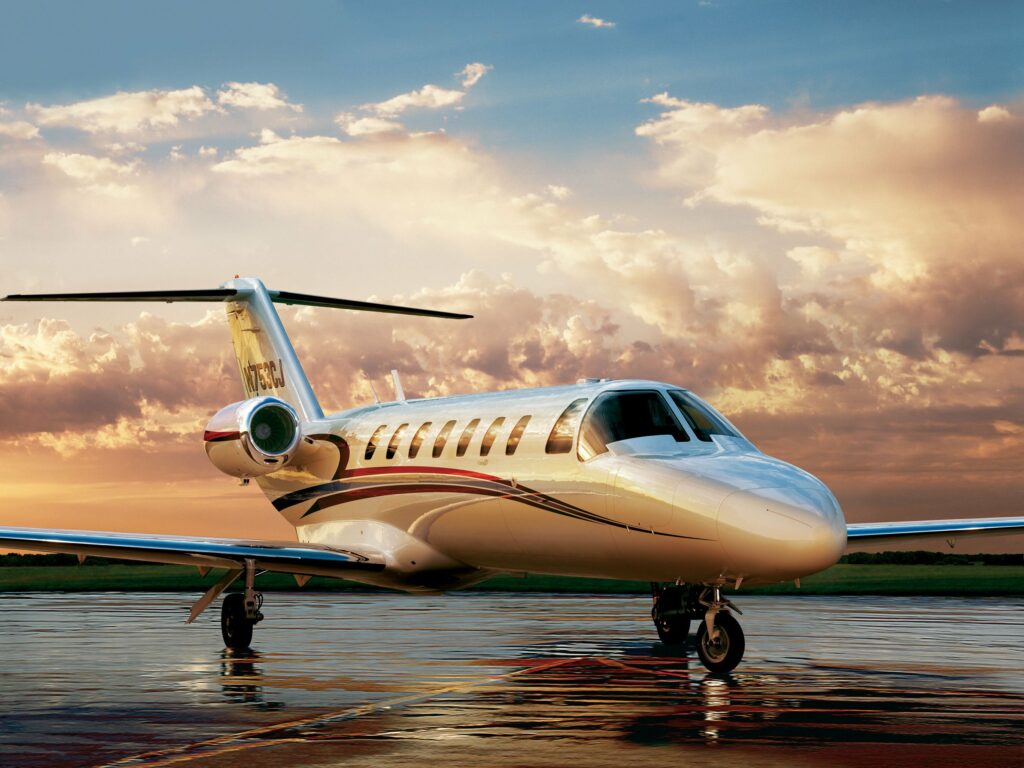
Even though Cessna places a lot of emphasis on its well-known single-engine piston aircraft, the Citation jets are now becoming a bigger element of its fleet of aircraft. Instead of just being a collection of specific models of aircraft, the Cessna Citation Jet series consists of numerous separate “families.”
Cessna Citation Xls
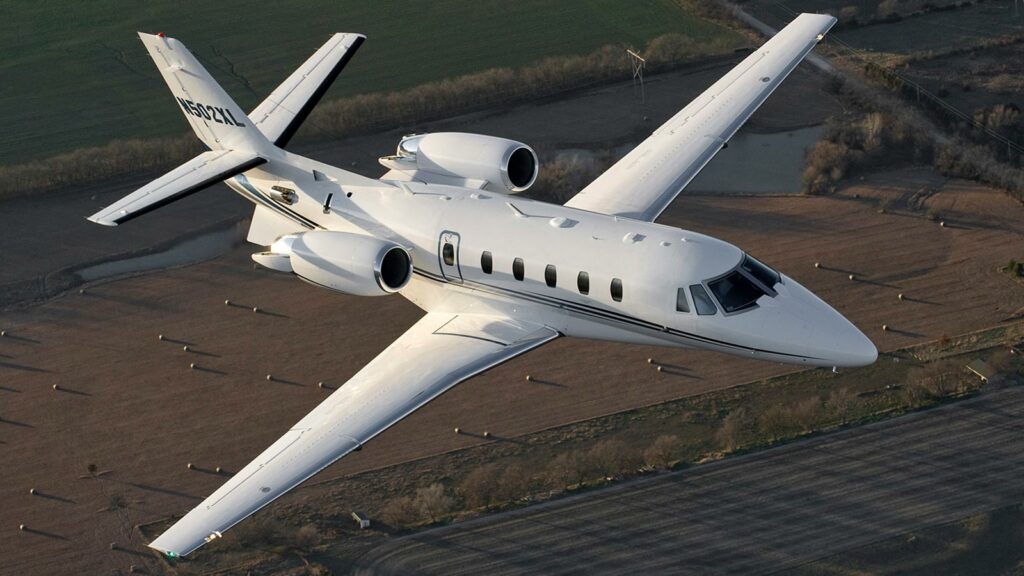
The Cessna Aircraft Company in Wichita, Kansas, produces the medium-sized business jet Cessna Citation XLS, which is powered by a jet engine. The Citation XLS, a member of the extensive Citation line of business aircraft, was the precursor to the Citation Excel and went into production in 2003.
Two Pratt & Whitney PW545B engines, each producing 3,975 pounds of thrust, and an upgraded Honeywell Primus 1000 EFIS avionics suite from the Citation Excel panel power the Citation XLS. The inside features a couch, fold-out tables, LED indirect lighting, and seating for nine people.
Furthermore, the cabin is silent and draft-free thanks to the triple-sealed entry door and triple-pane windows, and the external compartment has been expanded to 80 cubic feet to give more storage. 48 minutes faster than the Citation Excel, the upgraded Citation XLS can reach 43,000 feet in 25 minutes.
Cessna Citation Longitude
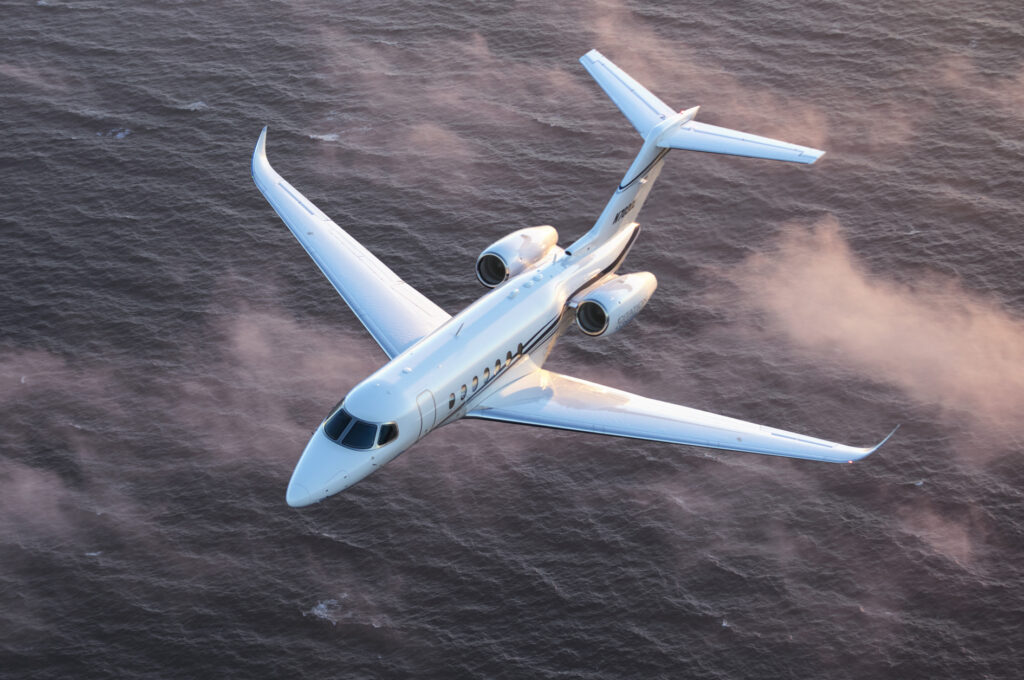
A business aircraft made by Cessna. The Model 680A was introduced at the NBAA convention in 2011. The prototype took to the air for the first time on February 18, 2014, it received FAA certification on June 5, 2015, and the first deliveries started on August 27.
It keeps the Model 680 Sovereign wing, twin P&WC PW306D turbofans, and cruciform tail but adds a new stand-up circular fuselage with a flat floor, which was maintained in the stretched, re-winged, and re-engined Cessna Citation Longitude.
The cabin of the Cessna Citation Longitude is roomy and big, with double-club seating. At the press of a button, the entire cabin’s lighting, temperature, and window coverings can be managed. With a payload capacity of 1,500 pounds, a top cruise speed of 476 knots, and a high-speed range of 3,400 nautical miles, passengers may travel farther distances, like from New York to London, without refueling.
The aircraft has Collins Aerospace flight controls, 12-passenger cabin seats, and two Honeywell HTF7000 turbofans for propulsion.
Cessna Citation M2
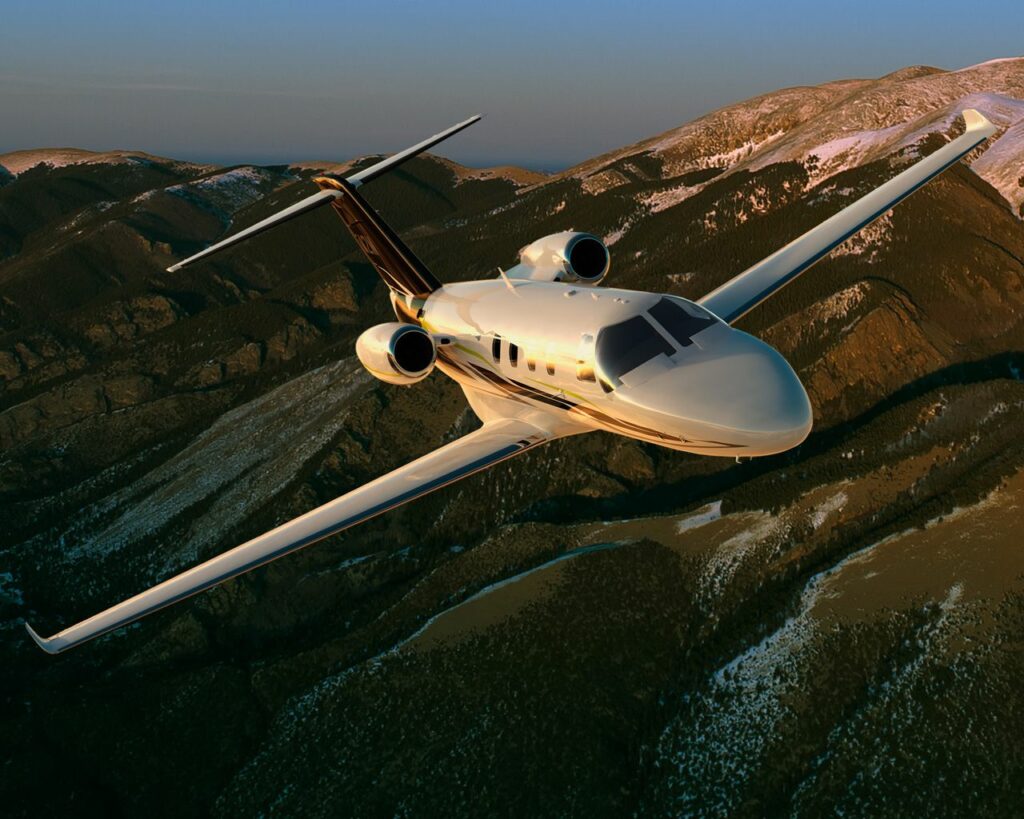
In terms of entry-level jets, the Citation M2 is frequently regarded as the model best suited for pilots transitioning from piston-engined aircraft. It has in-cabin technology, touch-controlled avionics made for a single pilot, and two potent Williams FJ44 engines. It is intended for individual, business, or charter flights.
It is capable of cruising at up to 404 knots. There is room inside for up to seven people and category-leading craftsmanship. It incorporates LED lights and a wifi cabin management system. We are therefore looking at something very different from the pretty simple single-engined aircraft for which Cessna is best known, even with this smallest type.
Cessna Pros And Cons
Pros
- Cessna planes are well-known for their dependability and the ease with which they can be serviced.
- In addition to providing shade for the pilot and passengers throughout the flight, the large wings of a Cessna single-engine aircraft allow for unobstructed views during the cruise.
- Since the company is well-known, maintenance and insurance are also convenient features. In fact, you’ll never have to explain what a Cessna airplane is because everyone is familiar with the name.
Cons
- Cessna aircraft are noted for having low power and “pulling” during flights at high altitudes.
- Cessnas are very short-ranged and have just a standard carrying capacity when compared to other general aviation aircraft.
FAQs
What city is Cessna headquartered in?
The first home of Cessna was in the Midwestern city of Wichita, Kansas.
Where Do Cessna Aircraft Get Built?
Textron Aviation, based in Wichita, Kansas, is presently responsible for producing Cessna aircraft. The establishment of Chinese production facilities is indicative of the company’s long-term strategy to relocate the majority, if not all, of its manufacturing operations there.
If your plane ever breaks down, you can still visit one of several service centers located in different parts of the world. Placement may be found in any of the eleven U.S. cities, from Orlando, Florida, to Sacramento, California, or Newburgh, New York.
In addition, 11 service stations can be found in foreign countries. Locations for these can also be found in Singapore, Switzerland, the United Kingdom, the Czech Republic, and Spain; however, Germany and France are the primary countries of origin.
Which Cessna aircraft sells the most units?
The most widely produced airplane worldwide is the Cessna 172.
Conclusion
The Cessna brand has been around for more than half a century. As a result of its commitment to innovation, it has rapidly risen to the ranks of the world’s most recognizably successful businesses. It has served the transportation needs of the government, business companies, and the military for many years.

